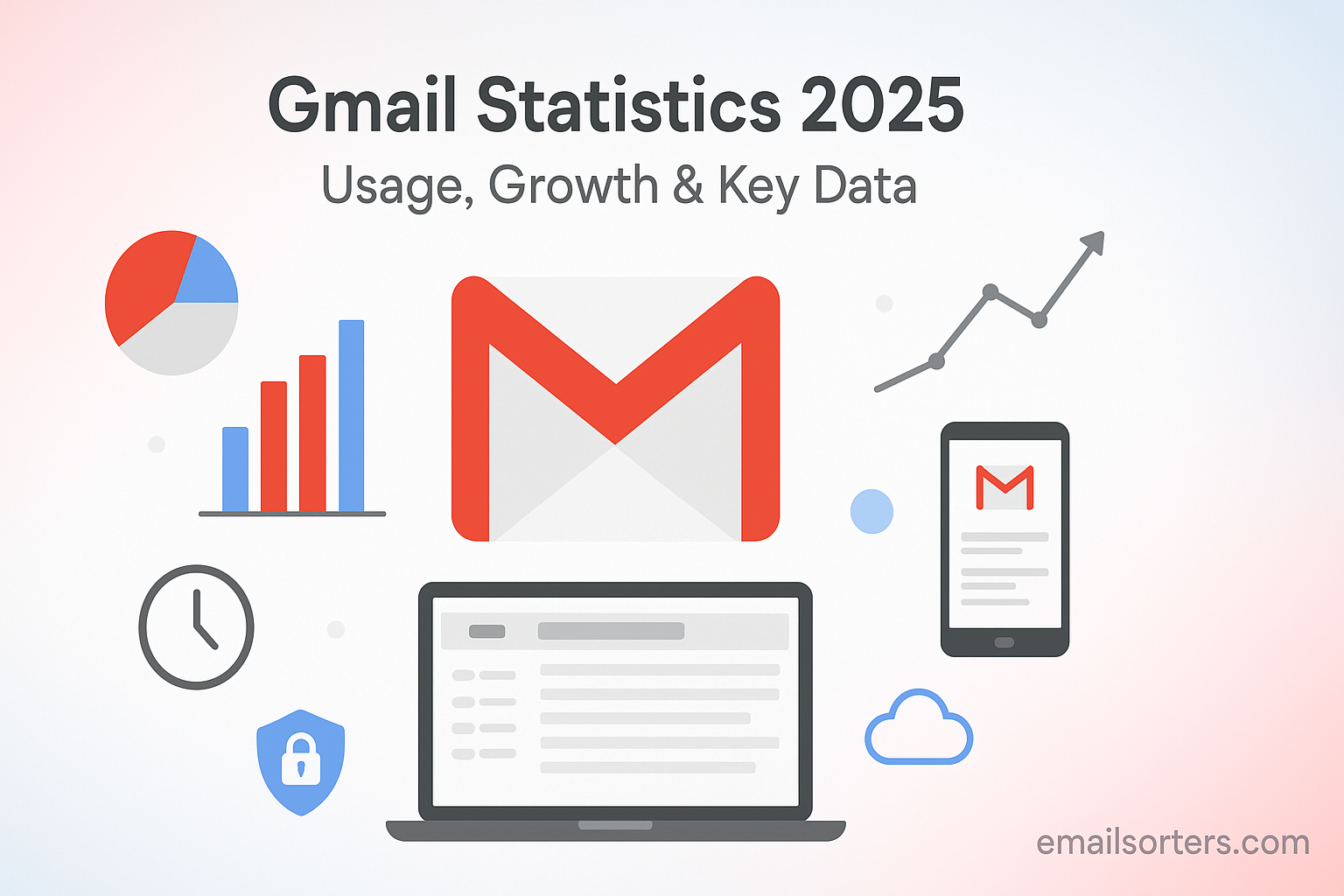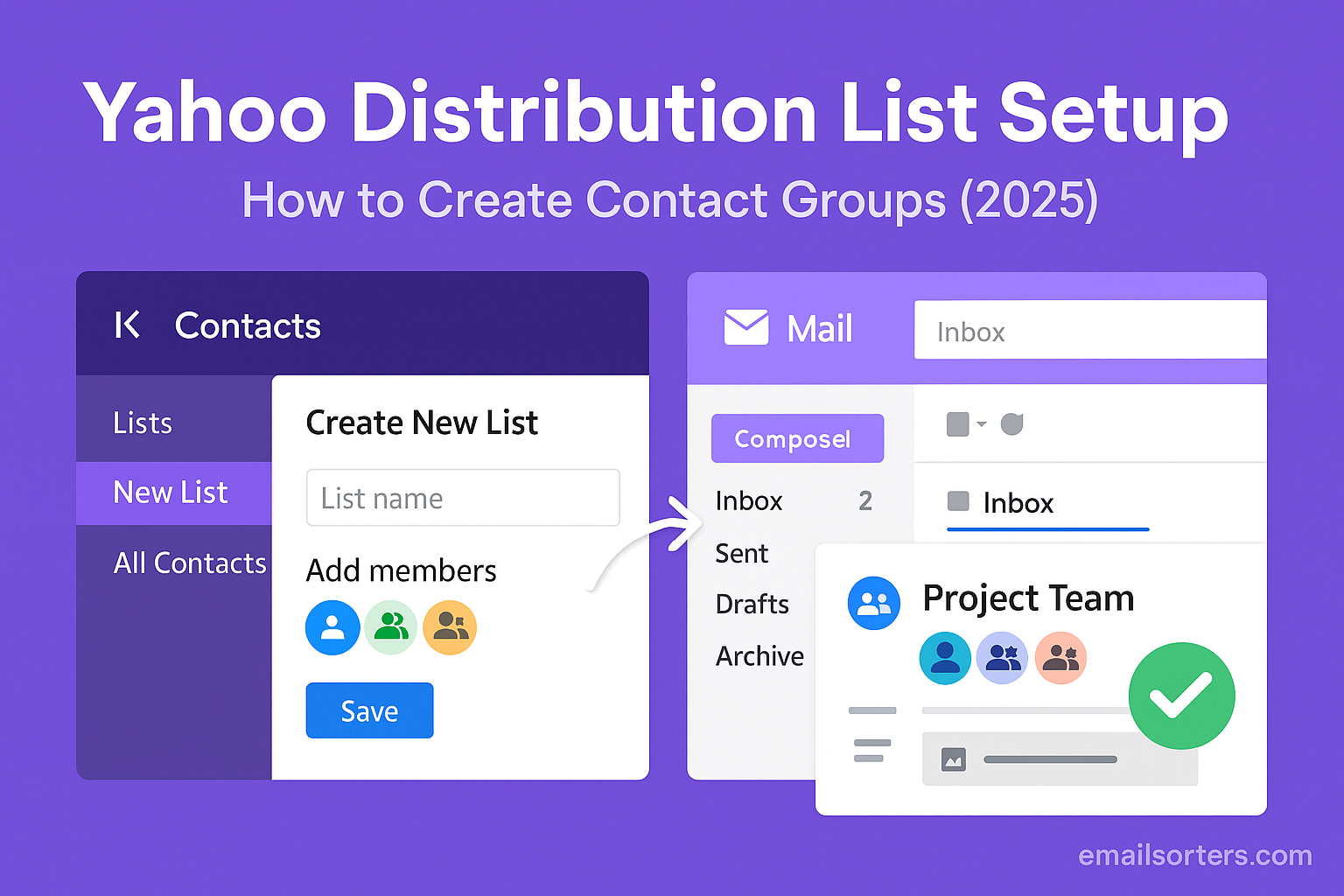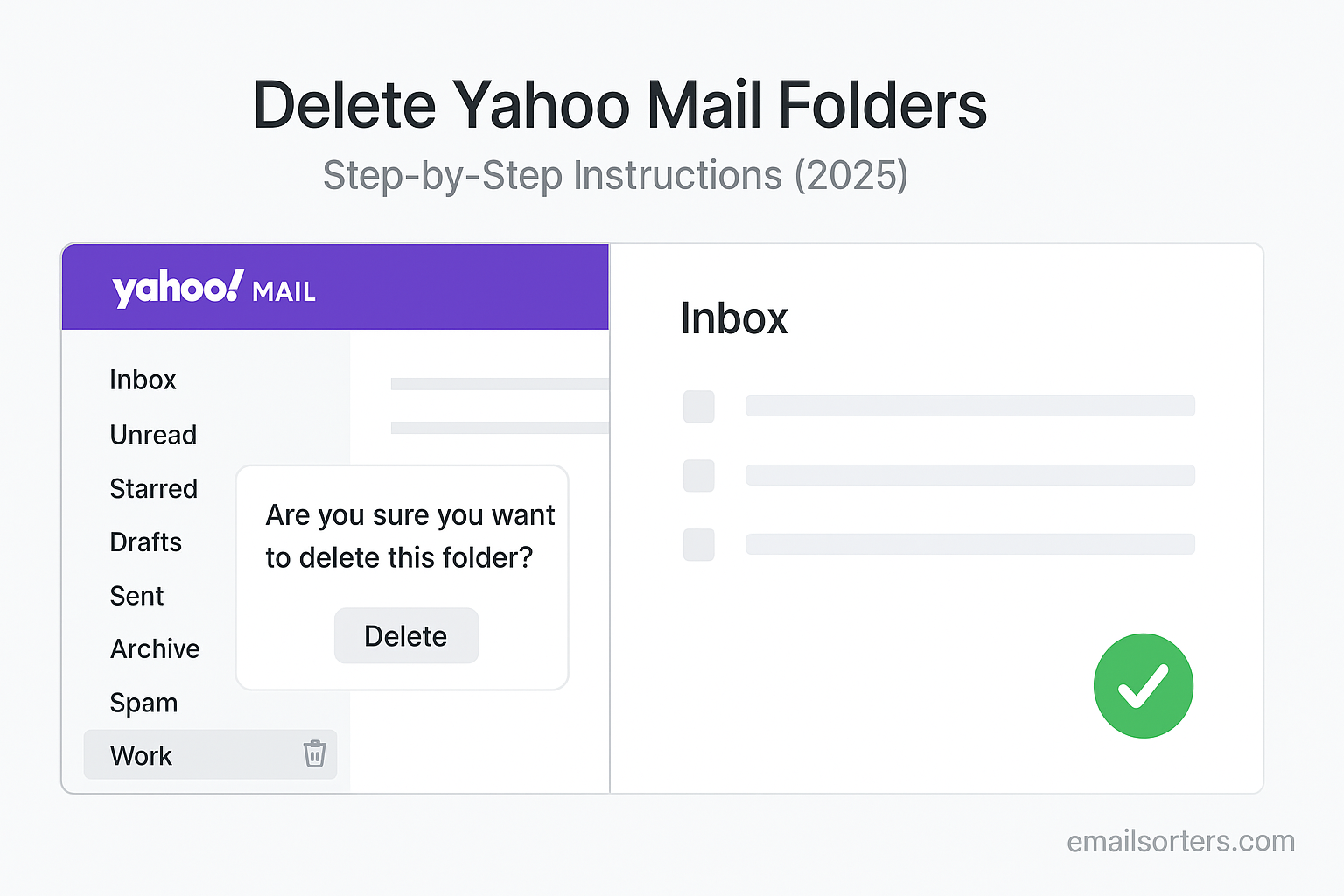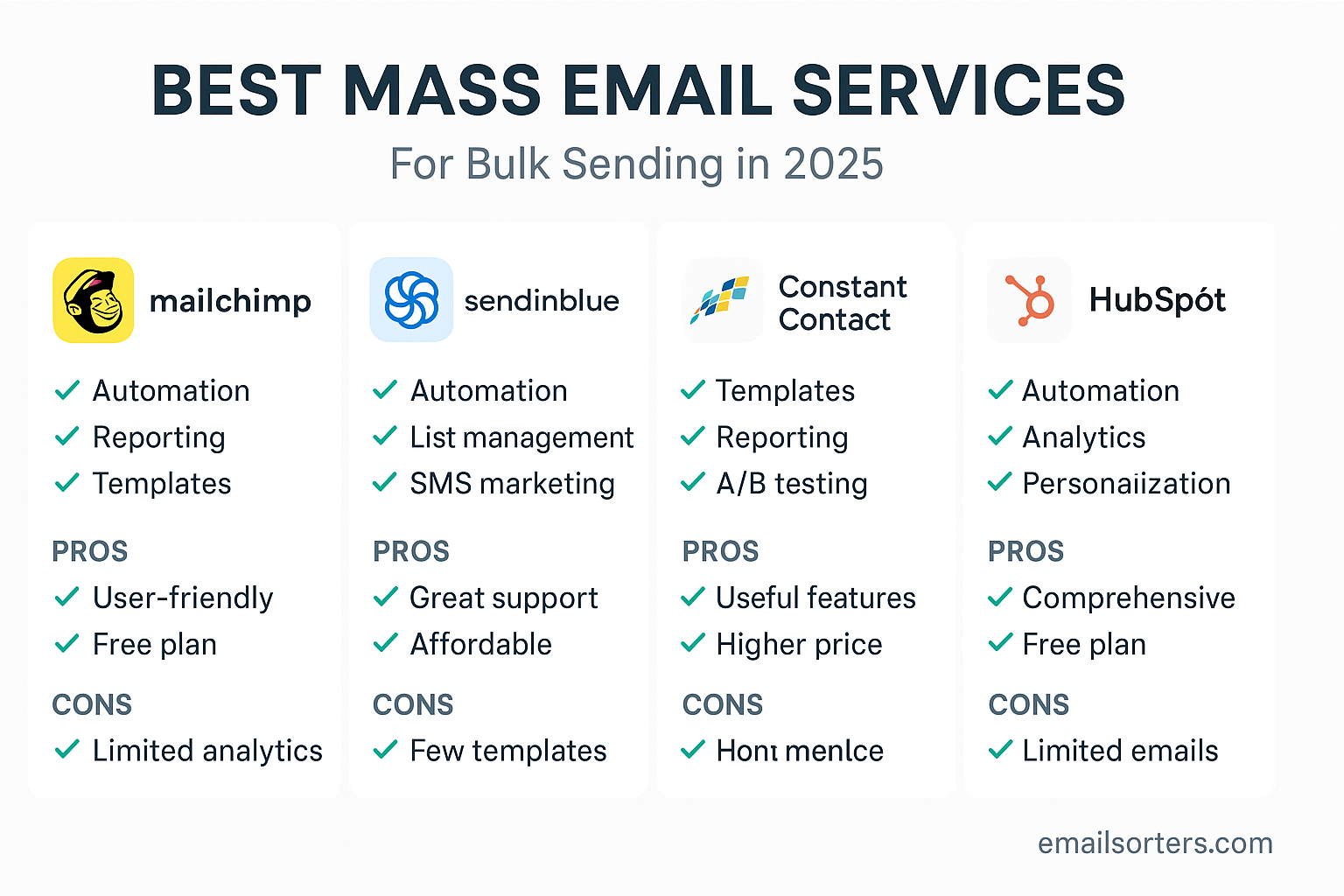Gmail Statistics show Gmail’s over 2.5 billion users make it essential to today’s digital communication. The statistics surrounding its usage, growth, and market share tell a remarkable story of technological innovation, strategic integration, and unparalleled market dominance. Understanding these numbers is key to grasping the scale and influence of the world’s leading email platform.
This 2025 guide provides a deep dive into the latest and most significant Gmail statistics. We will move beyond the headline numbers to analyze the historical context that fueled its growth, explore its position in the competitive landscape, and examine key data on user behavior. These statistics reveal how a single service evolved from an ambitious experiment into an indispensable tool for billions of people and millions of businesses.
The Story of Gmail’s Dominance: A Historical Perspective
To understand Gmail’s current statistical dominance, we must look back at its revolutionary origins and the strategic decisions that propelled its growth.
The Revolutionary Launch
Gmail was famously launched on April 1, 2004. At a time when leading competitors like Hotmail and Yahoo Mail offered a mere 2 to 4 megabytes of storage, Gmail’s offer of a full gigabyte was so audacious that many in the tech industry initially dismissed it as an April Fool’s Day joke. This single feature—offering hundreds of times more storage than the competition—instantly changed the webmail landscape forever and created immense demand for the new service.
From Invite-Only to Global Standard
During its extended beta period, Gmail was available by invitation only. This created a powerful sense of exclusivity and buzz, turning a simple email account into a coveted status symbol. Early users would strategically share their limited invites, creating a viral marketing effect that fueled its initial, organic growth. This word-of-mouth adoption built a strong foundation of loyal, tech-savvy users.
The Android Catalyst
Arguably the single most significant factor in Gmail’s journey to becoming the world’s most popular email service was the rise of Android. As the Android operating system grew to dominate the global smartphone market, Gmail was bundled as the default, essential email client on billions of devices. This strategic integration seamlessly onboarded hundreds of millions of new users, cementing its position as the de facto email service for the mobile era.
Core User and Usage Statistics for 2025
The headline numbers for Gmail in 2025 are staggering. They illustrate a platform with a truly global reach and a deeply embedded role in the daily lives of its users.
Total Number of Active Users
The most recent and widely cited figures indicate that Gmail has over 1.8 billion active users worldwide. Some estimates place this number even closer to 2 billion. An “active user” is typically defined as someone who has logged in to or interacted with the service at least once in the past 30 days. This massive figure means that approximately one in every four people on the planet actively uses Gmail.
Gmail’s Unbeaten Market Share
When measuring email client market share—which tracks where emails are being opened—Gmail consistently holds the top spot. Across all platforms, Gmail’s market share is approximately 33%. This means that one out of every three emails opened in the world is opened in a Gmail client (either the web interface or a mobile app). This dominant position makes it the most important platform for marketers and communicators to consider.
Mobile vs. Desktop Usage
The shift to mobile has profoundly impacted how people use email. Statistics show that over 75% of Gmail users access their email on a mobile device. This mobile-first behavior underscores the success of Google’s Android strategy and the quality of its iOS and Android apps. It also highlights the importance of mobile-friendly email design for anyone sending communications today.
The Power of the Free Model
The vast majority of Gmail’s over 2.5 billion users are on the free, ad-supported tier. By offering a powerful, feature-rich service at no cost, Google created a product with an incredibly low barrier to entry, enabling its rapid global expansion. This freemium model has been the cornerstone of its user acquisition strategy since day one.
The Business Side: Google Workspace Statistics
Beyond its consumer-facing service, Gmail is also the engine behind Google’s powerful suite of productivity tools for businesses, Google Workspace (formerly G Suite).
Number of Paying Customers
The adoption of Google Workspace has seen remarkable growth. The latest available statistics show that there are now over 9 million paying organizations using Google Workspace. This figure encompasses businesses of all sizes, from small startups to large multinational corporations, as well as educational institutions and non-profits.
Why Businesses Choose Gmail
The statistics on business adoption are driven by a clear value proposition. Google Workspace offers professional-grade features like custom email domains (@yourcompany.com), significantly larger storage allocations, advanced security and administrative controls, and guaranteed uptime. The seamless integration of Gmail with Google Drive, Docs, Sheets, and Calendar creates a comprehensive and collaborative productivity ecosystem that is a compelling alternative to traditional office software.
Small Businesses vs. Enterprise Adoption
Historically, Google’s business tools found their strongest footing with startups, small businesses, and in the education sector. However, recent growth statistics show increasing momentum in the enterprise market, with a growing number of large, established corporations making the switch to Google Workspace for its cloud-native collaboration features.
Gmail in a Competitive Landscape
Gmail’s dominance is best understood when its statistics are compared directly to those of its main competitors.
A Head-to-Head with Key Competitors
While Gmail leads the market, its primary competitors are Apple’s iPhone Mail client and Microsoft’s Outlook. Apple’s Mail client holds the number two spot in market share, driven by the popularity of the iPhone. Microsoft Outlook remains a powerhouse, especially in the corporate world. However, Gmail’s position as both a leading client and the largest email provider gives it a unique and powerful advantage.
How Gmail Compares to Legacy Providers
When comparing Gmail to long-standing webmail providers, its scale is even more apparent. For a full comparative picture, a look at the latest Yahoo statistics shows that while Yahoo Mail maintains a massive and loyal user base, its total number of active users is a fraction of Gmail’s. The story is similar when looking at an AOL Mail overview, which highlights how these legacy services have adapted but now serve a more niche audience compared to the market leader. A more detailed look at Yahoo’s platform can be found in this Yahoo Mail overview.
Deep Dive: Statistics on User Behavior and Feature Engagement
Beyond the high-level numbers, data on how people use Gmail reveals key trends in digital communication and productivity.
The Search-First Mentality
Data shows that the search bar is one of the most-used features within Gmail. This confirms the success of Google’s “search, don’t sort” philosophy. Power users leverage this capability to find any message from their archive in seconds. A key skill for this is knowing how to perform a Gmail search by date, which turns the inbox into a precise, searchable timeline.
The Rise of Multiple Accounts
Statistics indicate a growing trend of individuals owning multiple email addresses for different purposes (e.g., work, personal, shopping). This behavior has made features that allow users to easily switch between accounts essential. For those juggling several inboxes, learning how to effectively manage multiple Gmail accounts is a crucial productivity hack.
The Challenge of Inbox Overload
The sheer volume of email is a modern challenge. Statistics on inbox management show that a significant percentage of emails in the average inbox go unread, and users often have thousands of messages in their primary inbox. This data highlights the need for effective email organization.
AI and Automation Adoption (Smart Compose)
The adoption rates for Gmail’s AI-powered features are a strong indicator of the future of email. Features like Smart Compose, which suggests entire sentences as you type, are used billions of times per week. This demonstrates a clear user appetite for AI assistance in drafting communications.
Inbox Management Trends
The statistical reality of inbox overload has created a market for specialized tools designed to help users manage the clutter. The growth of third-party services that help with email organization is a direct response to this need. Tools from companies like Clean Email, for example, leverage automation to help users bulk-process thousands of emails, a task that is too cumbersome to do manually.
A Summary of Key Gmail Statistics for 2025
This list provides a scannable overview of the most important figures that define Gmail’s position in the market today.
Gmail by the Numbers
These headline statistics provide a clear snapshot of Gmail’s immense scale and its role as the leader in digital communication.
- Total Active Users: Over 2.5 Billion
- Global Email Client Market Share: Approximately 33% (leading position)
- Percentage of Emails Opened on Mobile: Over 75%
- Initial Storage Offering (2004): 1 Gigabyte
- Current Free Storage Offering: 15 Gigabytes (pooled with Drive and Photos)
- Google Workspace Paying Organizations: Over 9 Million
Frequently Asked Questions (FAQ)
Here are detailed answers to some of the most common questions about Gmail’s statistics and its place in the market.
1. How does Google calculate the number of “active” Gmail users?
The industry-standard metric for an “active” user is a Monthly Active User (MAU). This means the figure of 1.8 billion represents the number of unique accounts that have been accessed or have shown some form of interaction at least once in the preceding 30-day period. This is a much more accurate measure of current engagement than the total number of accounts ever created, as it excludes dormant or abandoned accounts.
2. What percentage of the world’s population uses Gmail?
Based on a global population of approximately 8 billion people, the 1.8 billion active Gmail users represent around 22.5% of all people on Earth. This is a rough estimate, as some individuals own and actively use multiple Gmail accounts. However, it provides a powerful illustration of the platform’s incredible reach and its role as a primary communication tool for a significant portion of the global population.
3. Do the market share statistics mean Gmail is the most used email provider?
This is an important distinction. Email client market share statistics typically measure where an email is opened. This includes apps like Apple Mail. However, Gmail is in a unique position of being both the #1 most popular email client (via its web and mobile apps) and the #1 most popular email provider (the service that hosts the actual @gmail.com address). Its dominance is twofold, which is a key reason for its strong market position.
4. How much revenue does Gmail generate?
Google does not report revenue for Gmail as a standalone product. Its financial performance is bundled into the “Google Services” segment in its parent company’s earnings reports. Gmail generates revenue in two primary ways: directly, through subscriptions to Google Workspace, and indirectly, by serving as a central hub for the Google ecosystem, which helps gather data for Google’s enormously profitable advertising business. Its strategic value is therefore far greater than its direct revenue alone.
5. What do the growth statistics predict for the future of Gmail?
While the explosive, exponential growth of Gmail’s first decade has naturally slowed as the email market has matured, its user base continues to grow at a steady and impressive rate. Future growth is expected to be driven by two main factors: the continued expansion of internet access in developing markets and the increasing adoption of Google Workspace by businesses moving to cloud-based productivity tools. The integration of more advanced and helpful AI features will also be a key driver of user retention and engagement.




